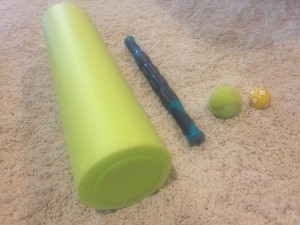For a ballerina, there’s no bigger pill to swallow than starting a warmup with all-over muscle soreness. You worked your buns off the day before, and today, you’re feeling the consequence. Your legs each weigh a ton, your arms are like cooked noodles and your abs are so sore that even a chuckle sends you into the fetal position.
How are you supposed to dance when your body feels like this?
Despite what you might think, muscle soreness can be a good thing. It can be frustrating and dreadful at times, but it’s a sign that your body has been challenged and is doing the repairs it needs in order to build muscle tissue.
Of course, by stretching and working responsibly, you can prevent unnecessary damage to this tissue — but if you’re pushing for significant improvement, it’s almost impossible to totally avoid soreness altogether. Because we all experience it at some point, here’s a list of our favorite remedies for those pesky aches:
1. Water
We all know that our bodies are largely composed of water and that it’s crucial to stay hydrated especially when we’re active. Get as much of it as you can during your rest periods and you’ll decrease the amount of soreness you experience after your workouts. By drinking lots of water, you’re flushing out the buildup of lactic acid in your muscles, which is what causes soreness. Try an electrolyte-infused water to replace what your body loses in sweat, and you’ll keep your muscles lubricated for your next session.
Beyond drinking it, the next best thing for sore muscles is soaking in it. Epsom salt baths are extremely beneficial as they provide the crucial minerals magnesium and sulfate, which help to form proteins and to flush toxins such as lactic acid from the body. Try adding about two cups of Epsom salt to a warm bath (it will dissolve more quickly under running water) and soak for at least 12 minutes. Your muscles will instantly feel more relaxed when you’re weightless in the warm water.
2. Massage
It might seem counter-intuitive to squeeze and rub your muscles when they’re already throbbing, but it’s the best way to push out that lactic acid that makes you weep in pain. Aside from the tried-and-true method of manual massage, here are some really helpful tools that can do the work for you.
- Foam roller
This one’s especially great for pressing out that IT Band, the “turnout” muscle. It gets knotted up easily, and ballerinas can benefit from massaging it regularly.
- “The Stick”
For lack of a better name, The Stick is an awesome alternative to the foam roller. It’s thinner and made of a firmer material, so it reaches smaller areas with more pressure. Also, it’s handheld, so you can do it just about anywhere you can sit down.
- Tennis ball
If you have one of these babies laying around, try using it to get localized pressure on those tiny areas your hands can’t find. Though most people use them to massage sore arches, there are tons of ways to use them. Experiment with lying on floor with the ball underneath your back — the spaces between your shoulder blades and spine carry a lot of tension, and the tennis ball works wonders here. Depending on the kind of pressure you like, a bouncy ball or golf ball will also work.
3. Stretching
Sometimes it feels great to sit in a straddle when your inner thighs are sore and you might think that stretching is exactly what you need. This is partially true, but in general, try to stay away from static stretching when you’re sore. For the most part, muscle soreness is caused by tiny tears in your muscle fibers. By sitting in a stretch for a long period of time, you’re probably only adding to the torn tissue, and your soreness will probably only get worse. Instead, try some dynamic stretches to warm your body and bring blood flow to your muscles. A great place to start is with sun salutation or some grand pliés.
4. Nutrition
What you eat is a extremely important to how you heal. Make sure you’re getting a balanced mix of lean proteins and complex carbohydrates. Eating foods such as bananas or spinach which are high in potassium will help soothe muscle cramps and anything with vitamin E will help reduce inflammation. Nuts, for example, are a great after-class snack because they have tons of protein and vitamin E.
5. Rest
What your mother always told you is actually true. Beyond all else, rest is what your body needs most in order to recuperate, whether it’s from illness, injury, or just exhaustion. When your muscles are telling you to stop pushing them, listen. Sometimes trying to push through the pain will only create more pain, and it’s important to know when to just stop and rest. Allow yourself plenty of rest and sleep, and if after two full days of rest you still feel too sore to move, ask your doctor about how to treat the pain. If your soreness is actually a more serious injury, you should find out as soon as possible so that it can heal properly.
__________________________________________________

